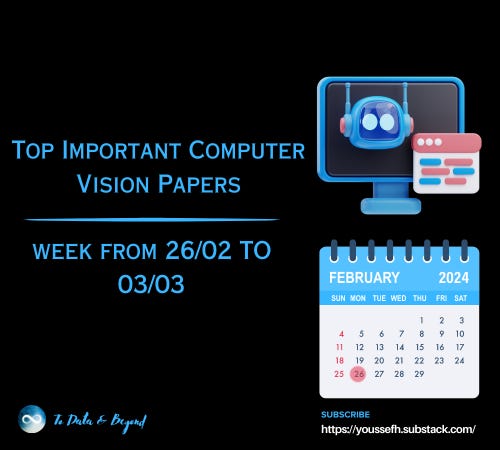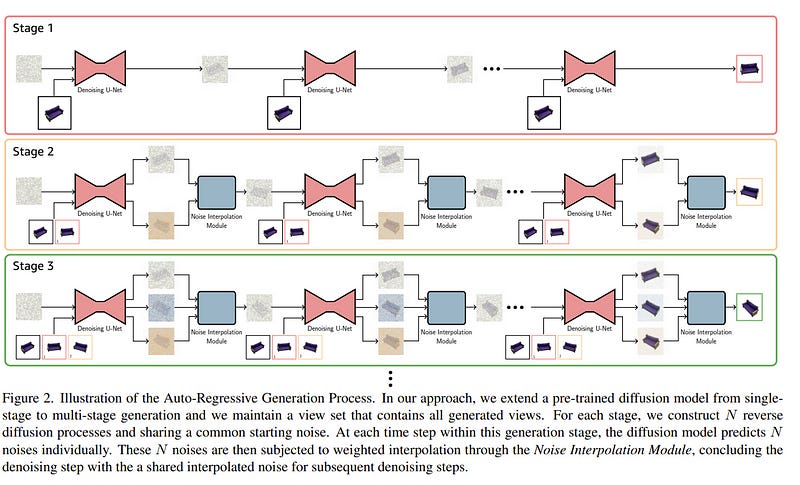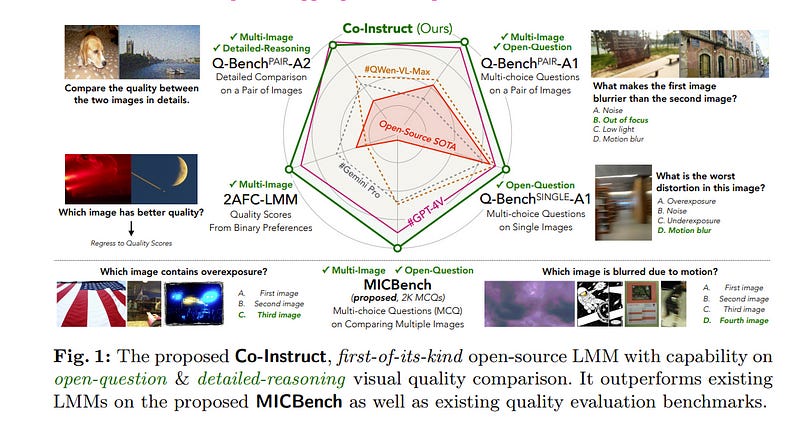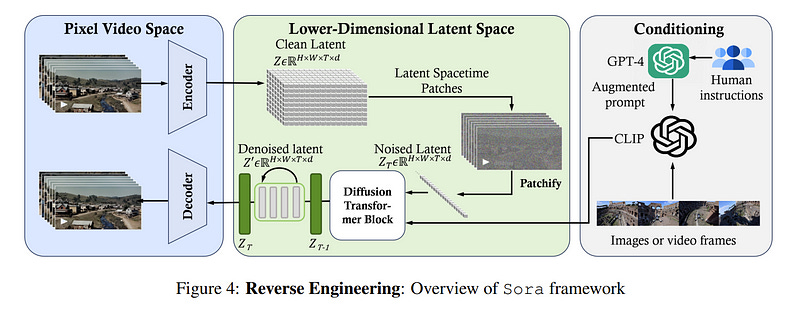Top Important Computer Vision Papers for the Week from 26/02 to 03/03
Stay Updated with Recent Computer Vision Research
Every week, several top-tier academic conferences and journals showcased innovative research in computer vision, presenting exciting breakthroughs in various subfields such as image recognition, vision model optimization, generative adversarial networks (GANs), image segmentation, video analysis, and more.
This article provides a comprehensive overview of the most significant papers published in the First Week of March 2024, highlighting the latest research and advancements in computer vision. Whether you’re a researcher, practitioner, or enthusiast, this article will provide valuable insights into the state-of-the-art techniques and tools in computer vision.
Table of Contents:
Diffusion Models
Vision Language Models
Image Generation & Editing
Video Generation & Editing
1. Diffusion Models
1.1. ViewFusion: Towards Multi-View Consistency via Interpolated Denoising
Novel-view synthesis through diffusion models has demonstrated remarkable potential for generating diverse and high-quality images. Yet, the independent process of image generation in these prevailing methods leads to challenges in maintaining multiple-view consistency.
To address this, we introduce ViewFusion, a novel, training-free algorithm that can be seamlessly integrated into existing pre-trained diffusion models. Our approach adopts an auto-regressive method that implicitly leverages previously generated views as context for the next view generation, ensuring robust multi-view consistency during the novel-view generation process.
Through a diffusion process that fuses known-view information via interpolated denoising, our framework successfully extends single-view conditioned models to work in multiple-view conditional settings without any additional fine-tuning. Extensive experimental results demonstrate the effectiveness of ViewFusion in generating consistent and detailed novel views.
1.2. DistriFusion: Distributed Parallel Inference for High-Resolution Diffusion Models
Diffusion models have achieved great success in synthesizing high-quality images. However, generating high-resolution images with diffusion models is still challenging due to the enormous computational costs, resulting in a prohibitive latency for interactive applications.
In this paper, we propose DistriFusion to tackle this problem by leveraging parallelism across multiple GPUs. Our method splits the model input into multiple patches and assigns each patch to a GPU. However, na\”{\i}vely implementing such an algorithm breaks the interaction between patches and loses fidelity, while incorporating such an interaction will incur tremendous communication overhead.
To overcome this dilemma, we observe the high similarity between the input from adjacent diffusion steps and propose displaced patch parallelism, which takes advantage of the sequential nature of the diffusion process by reusing the pre-computed feature maps from the previous timestep to provide context for the current step.
Therefore, our method supports asynchronous communication, which can be pipelined by computation. Extensive experiments show that our method can be applied to recent Stable Diffusion XL with no quality degradation and achieve up to a 6.1 times speedup on eight NVIDIA A100s compared to one.
2. Vision Language Models
2.1. Panda-70M: Captioning 70M Videos with Multiple Cross-Modality Teachers
The quality of the data and annotation upper-bounds the quality of a downstream model. While there exist large text corpora and image-text pairs, high-quality video-text data is much harder to collect.
First of all, manual labeling is more time-consuming, as it requires an annotator to watch an entire video. Second, videos have a temporal dimension, consisting of several scenes stacked together, and showing multiple actions. Accordingly, to establish a video dataset with high-quality captions, we propose an automatic approach leveraging multimodal inputs, such as textual video description, subtitles, and individual video frames. Specifically, we curate 3.8M high-resolution videos from the publicly available HD-VILA-100M dataset.
We then split them into semantically consistent video clips, and apply multiple cross-modality teacher models to obtain captions for each video. Next, we finetune a retrieval model on a small subset where the best caption of each video is manually selected and then employ the model in the whole dataset to select the best caption as the annotation.
In this way, we get 70M videos paired with high-quality text captions. We dub the dataset as Panda-70M. We show the value of the proposed dataset on three downstream tasks: video captioning, video and text retrieval, and text-driven video generation. The models trained on the proposed data score substantially better on the majority of metrics across all the tasks.
2.2. Towards Open-ended Visual Quality Comparison
Comparative settings (e.g. pairwise choice, listwise ranking) have been adopted by a wide range of subjective studies for image quality assessment (IQA), as it inherently standardizes the evaluation criteria across different observers and offers more clear-cut responses.
In this work, we extend the edge of emerging large multi-modality models (LMMs) to further advance visual quality comparison into open-ended settings, that 1) can respond to open-range questions on quality comparison; and 2) can provide detailed reasonings beyond direct answers. To this end, we propose the Co-Instruct.
To train this first-of-its-kind open-source open-ended visual quality comparer, we collect the Co-Instruct-562K dataset, from two sources: (a) LMM-merged single image quality description, (b) GPT-4V “teacher” responses on unlabeled data. Furthermore, to better evaluate this setting, we propose the MICBench, the first benchmark on multi-image comparison for LMMs.
We demonstrate that Co-Instruct not only achieves 30% higher superior accuracy than state-of-the-art open-source LMMs but also outperforms GPT-4V (its teacher), on both existing related benchmarks and the proposed MICBench.
2.3. CLoVe: Encoding Compositional Language in Contrastive Vision-Language Models
Recent years have witnessed a significant increase in the performance of Vision and Language tasks. Foundational Vision-Language Models (VLMs), such as CLIP, have been leveraged in multiple settings and demonstrated remarkable performance across several tasks.
Such models excel at object-centric recognition yet learn text representations that seem invariant to word order, failing to compose known concepts in novel ways. However, no evidence exists that any VLM, including large-scale single-stream models such as GPT-4V, identifies compositions successfully.
In this paper, we introduce a framework to significantly improve the ability of existing models to encode compositional language, with over 10% absolute improvement on compositionality benchmarks, while maintaining or improving the performance on standard object recognition and retrieval benchmarks.
3. Image Generation & Editing
3.1. Multi-LoRA Composition for Image Generation
Low-rank adaptation (LoRA) is extensively utilized in text-to-image models for the accurate rendition of specific elements like distinct characters or unique styles in generated images. Nonetheless, existing methods face challenges in effectively composing multiple LoRAs, especially as the number of LoRAs to be integrated grows, thus hindering the creation of complex imagery.
In this paper, we study multi-LoRA composition through a decoding-centric perspective. We present two training-free methods: LoRA Switch, which alternates between different LoRAs at each denoising step, and LoRA Composite, which simultaneously incorporates all LoRAs to guide more cohesive image synthesis.
To evaluate the proposed approaches, we establish ComposLoRA, a new comprehensive testbed as part of this research. It features a diverse range of LoRA categories with 480 composition sets. Utilizing an evaluation framework based on GPT-4V, our findings demonstrate a clear improvement in performance with our methods over the prevalent baseline, particularly evident when increasing the number of LoRAs in a composition.
3.2. Disentangled 3D Scene Generation with Layout Learning
We introduce a method to generate 3D scenes that are disentangled into their component objects. This disentanglement is unsupervised, relying only on the knowledge of a large pretrained text-to-image model. Our key insight is that objects can be discovered by finding parts of a 3D scene that, when rearranged spatially, still produce valid configurations of the same scene.
Concretely, our method jointly optimizes multiple NeRFs from scratch — each representing its object — along with a set of layouts that composite these objects into scenes. We then encourage these composited scenes to be distributed according to the image generator. We show that despite its simplicity, our approach successfully generates 3D scenes decomposed into individual objects, enabling new capabilities in text-to-3D content creation.
3.3. Trajectory Consistency Distillation
The latent Consistency Model (LCM) extends the Consistency Model to the latent space and leverages the guided consistency distillation technique to achieve impressive performance in accelerating text-to-image synthesis. However, we observed that LCM struggles to generate images with both clarity and detailed intricacy.
To address this limitation, we initially delve into and elucidate the underlying causes. Our investigation identifies that the primary issue stems from errors in three distinct areas. Consequently, we introduce Trajectory Consistency Distillation (TCD), which encompasses trajectory consistency function and strategic stochastic sampling.
The trajectory consistency function diminishes the distillation errors by broadening the scope of the self-consistency boundary condition and endowing the TCD with the ability to accurately trace the entire trajectory of the Probability Flow ODE.
Additionally, strategic stochastic sampling is specifically designed to circumvent the accumulated errors inherent in multi-step consistency sampling, which is meticulously tailored to complement the TCD model. Experiments demonstrate that TCD not only significantly enhances image quality at low NFEs but also yields more detailed results compared to the teacher model at high NFEs.
3.4. VastGaussian: Vast 3D Gaussians for Large Scene Reconstruction
Existing NeRF-based methods for large scene reconstruction often have limitations in visual quality and rendering speed. While the recent 3D Gaussian Splatting works well on small-scale and object-centric scenes, scaling it up to large scenes poses challenges due to limited video memory, long optimization time, and noticeable appearance variations.
To address these challenges, we present VastGaussian, the first method for high-quality reconstruction and real-time rendering on large scenes based on 3D Gaussian Splatting. We propose a progressive partitioning strategy to divide a large scene into multiple cells, where the training cameras and point cloud are properly distributed with an airspace-aware visibility criterion.
These cells are merged into a complete scene after parallel optimization. We also introduce decoupled appearance modeling into the optimization process to reduce appearance variations in the rendered images. Our approach outperforms existing NeRF-based methods and achieves state-of-the-art results on multiple large scene datasets, enabling fast optimization and high-fidelity real-time rendering.
4. Video Generation & Editing
4.1. EMO: Emote Portrait Alive — Generating Expressive Portrait Videos with Audio2Video Diffusion Model under Weak Conditions
In this work, we tackle the challenge of enhancing realism and expressiveness in talking head video generation by focusing on the dynamic and nuanced relationship between audio cues and facial movements.
We identify the limitations of traditional techniques that often fail to capture the full spectrum of human expressions and the uniqueness of individual facial styles. To address these issues, we propose EMO, a novel framework that utilizes a direct audio-to-video synthesis approach, bypassing the need for intermediate 3D models or facial landmarks.
Our method ensures seamless frame transitions and consistent identity preservation throughout the video, resulting in highly expressive and lifelike animations. Experimental results demonstrate that EMO can produce not only convincing speaking videos but also singing videos in various styles, significantly outperforming existing state-of-the-art methodologies in terms of expressiveness and realism.
4.2. Sora: A Review on Background, Technology, Limitations, and Opportunities of Large Vision Models
Sora is a text-to-video generative AI model, released by OpenAI in February 2024. The model is trained to generate videos of realistic or imaginative scenes from text instructions and show potential in simulating the physical world.
Based on public technical reports and reverse engineering, this paper presents a comprehensive review of the model’s background, related technologies, applications, remaining challenges, and future directions of text-to-video AI models. We first trace Sora’s development and investigate the underlying technologies used to build this “world simulator”.
Then, we describe in detail the applications and potential impact of Sora in multiple industries ranging from film-making and education to marketing. We discuss the main challenges and limitations that need to be addressed to widely deploy Sora, such as ensuring safe and unbiased video generation.
Lastly, we discuss the future development of Sora and video generation models in general, and how advancements in the field could enable new ways of human-AI interaction, boosting productivity and creativity of video generation.
4.3. Video as the New Language for Real-World Decision-Making
Both text and video data are abundant on the internet and support large-scale self-supervised learning through the next token or frame prediction. However, they have not been equally leveraged: language models have had significant real-world impact, whereas video generation has remained largely limited to media entertainment. Yet video data captures important information about the physical world that is difficult to express in language.
To address this gap, we discuss an under-appreciated opportunity to extend video generation to solve tasks in the real world. We observe how akin to language, video can serve as a unified interface that can absorb internet knowledge and represent diverse tasks. Moreover, we demonstrate how, like language models, video generation can serve as planners, agents, compute engines, and environment simulators through techniques such as in-context learning, planning, and reinforcement learning.
We identify major impact opportunities in domains such as robotics, self-driving, and science, supported by recent work that demonstrates how such advanced capabilities in video generation are plausibly within reach. Lastly, we identify key challenges in video generation that mitigate progress. Addressing these challenges will enable video generation models to demonstrate unique value alongside language models in a wider array of AI applications.
4.4. Sora Generates Videos with Stunning Geometrical Consistency
The recently developed Sora model has exhibited remarkable capabilities in video generation, sparking intense discussions regarding its ability to simulate real-world phenomena. Despite its growing popularity, there is a lack of established metrics to evaluate its fidelity to real-world physics quantitatively.
In this paper, we introduce a new benchmark that assesses the quality of the generated videos based on their adherence to real-world physics principles. We employ a method that transforms the generated videos into 3D models, leveraging the premise that the accuracy of 3D reconstruction is heavily contingent on the video quality.
From the perspective of 3D reconstruction, we use the fidelity of the geometric constraints satisfied by the constructed 3D models as a proxy to gauge the extent to which the generated videos conform to real-world physics rules.
4.5. Seeing and Hearing: Open-domain Visual-Audio Generation with Diffusion Latent Aligners
Video and audio content creation serves as the core technique for the movie industry and professional users. Recently, existing diffusion-based methods tackle video and audio generation separately, which hinders the technique transfer from academia to industry.
In this work, we aim at filling the gap, with a carefully designed optimization-based framework for cross-visual-audio and joint-visual-audio generation. We observe the powerful generation ability of off-the-shelf video or audio generation models. Thus, instead of training the giant models from scratch, we propose to bridge the existing strong models with a shared latent representation space.
Specifically, we propose a multimodality latent aligner with the pre-trained ImageBind model. Our latent aligner shares a similar core as the classifier guidance that guides the diffusion denoising process during inference time. Through carefully designed optimization strategy and loss functions, we show the superior performance of our method on joint video-audio generation, visual-steered audio generation, and audio-steered visual generation tasks.
Are you looking to start a career in data science and AI and do not know how? I offer data science mentoring sessions and long-term career mentoring:
Mentoring sessions: https://lnkd.in/dXeg3KPW
Long-term mentoring: https://lnkd.in/dtdUYBrM

















